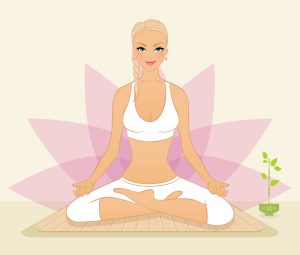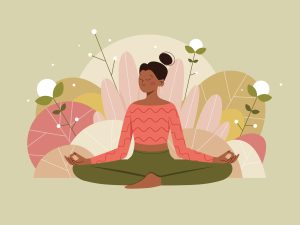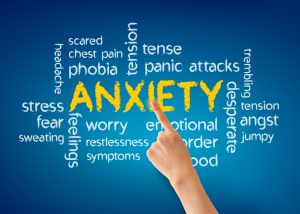I. Spiritual Counseling and Renewal in a New Year

As the end of the year comes, people often think about what happened in the past year, including both successes and difficulties, and they look ahead to what they want for the future. This time of self-reflection opens up ways to engage in spiritual renewal activities, which can help with personal growth and refreshment. Taking part in these activities can help people understand themselves better and feel more connected to the wider world. The new year represents not just a new beginning, but also a time to reassess goals, beliefs, and relationships. By adding spiritual renewal activities like meditation, journaling, or being mindful, individuals can create a life that is more meaningful and directed. This essay will look at different methods for spiritual renewal that can support personal change and inspire individuals to start a journey of growth in the new year.
Spiritual Counselors, Christian Counselors, as well as any type of counselor may find numerous individuals wishing to better themselves at the dawn of a New Year. It is their job to encourage and help individuals maintain the devotion and energy throughout the year to reach spiritual renewal and betterment. In Christianity, this means focus on Christ, while in other faith traditions and spiritual practices, it may result in inner focuses. This short blog looks at general spirituality and ways to find inner peace, but for those within the Christian, Jewish, and Islamic disciplines, these basics can be also applied as tools as well to better one’s spiritual focus and life. Many times, individuals who are not associated with a particular religion use the term spiritual to define themselves, but this term should not be solely utilized for their personal spirituality but also for those who adhere to major religions as well. Spirituality is important for everyone and no matter one’s faith tradition, or spiritual journey, finding meaning and renewal at some level of consciousness is critical to good mental health. Spiritual Counselors can play a big role in helping individuals regardless of religious affiliation find healthy spiritual health.
Please also review AIHCP’s Spiritual Counseling, Christian Counseling, as well as its Meditation Instructor Program. The programs are online and independent study and open to qualified professionals seeking a four year certification in these practices.
A. Definition of spiritual renewal
Spiritual renewal is a process that changes and refreshes a person’s spiritual beliefs, practices, and sense of purpose. It usually consists of looking inward and reconnecting with core values, which helps an individual understand themselves and their connection to the universe better. Spiritual renewal connects with the idea that participating in rituals like prayer or meditation can create a sense of belonging and identity in a community, highlighted in studies of liturgy in changing folk churches ((Haapiainen et al., 2017)). Additionally, these practices can help balance modern secular issues by providing a safe space for reflection and healing ((Giordan et al., 2017)). By welcoming spiritual renewal at the beginning of a new year, people can remove emotional and mental blocks, leading to personal growth and a new viewpoint that improves their overall well-being.
B. Importance of spiritual practices in personal growth
Spiritual practices are really important for helping people grow by encouraging self-awareness, emotional strength, and a connection to something bigger. Doing things like meditation, prayer, or mindfulness helps people take a break from daily distractions, letting them think about their beliefs and values. This thinking process helps people understand themselves better and builds caring qualities, which can improve relationships and community participation. Also, when people work on their spirituality, they often feel more peace and happiness, which is good for their mental and emotional health. The strong effects of these practices can be especially noticeable during times of change, like at the start of a new year, when people want to set new intentions and goals. So, adding spiritual practices can enhance a person’s overall development and refreshing (Benson et al., 2001)(Nathan Cummings Foundation, 2007).
C. Overview of the essay structure
To share the complex ideas about spiritual renewal habits for a new year, a clear essay layout is very important. First, the introduction needs to explain why spiritual renewal matters today, creating the setting and grabbing the reader’s attention. The next parts will focus on certain practices like meditation, forgiveness, and being part of a community, each showing how these habits help with personal development and change. Moreover, the discussion should look at the possible difficulties people might encounter when trying to adopt these practices, giving a fair view on how effective they are. The conclusion not only wraps up the main points but also encourages readers to take on these practices as vital to their life paths in the new year. This method supports the main idea, highlighting spiritual renewal as a necessary goal in seeking overall well-being and greater satisfaction (Hatton et al., 2013)(Valparaiso University, 2002).
II. Mindfulness and Meditation

Bringing mindfulness and meditation into daily life can be a meaningful practice of spiritual renewal, especially at the beginning of a new year. Using these reflective techniques can help people be more aware of the present, which allows them to let go of worries from the past and fears about the future. This practice not only brings inner calm but also improves self-reflection, which helps people grow and be emotionally strong. In different learning environments, adding these thoughtful methods has shown to help both teachers and students by building connections to themselves and to others while boosting overall well-being ((Brantmeier et al., 2017)). Additionally, putting mindfulness within a spiritual context of being connected to others improves learning experiences, enabling individuals to tackle big questions and gain a better grasp of their role in the world ((Roenpagel et al., 2015)). In the end, using mindfulness and meditation can spark important changes as people start a year focused on renewal and growth.
Bear in mind, basic meditation techniques can be applicable for all faith bases, but to the extent and theological understanding may differ among different faiths. For instance, Eastern techniques may be useful in themselves to a Christian for calmness and peace but the theological beliefs may greatly vary and how they are applied.
A. Benefits of mindfulness in daily life
Mindfulness is a practice that focuses on being aware of the present moment. It has gained more attention for its many benefits in everyday life, especially as people look for spiritual renewal at the beginning of a new year. Practicing mindfulness can help people build emotional strength and improve overall well-being, as it allows for self-awareness and better stress management. This practice helps individuals take a break from the fast pace of modern life, creating more clarity and focus. Additionally, recent studies state that mindfulness can enhance relationships by improving communication and connection between people ((Lawson et al., 2019)). This is very important since social ties are essential for spiritual growth. By adding mindfulness to their daily routines, people may find they are more prepared to face challenges, resulting in personal development and a fresh sense of purpose as they start their paths of spiritual renewal ((Schiavone et al., 2017)).
B. Different meditation techniques for beginners
As people start their journey of spiritual renewal for the new year, trying different meditation methods can help with personal growth and self-discovery. For those new to this practice, mindfulness meditation provides a clear method, where one concentrates on their breathing and watches thoughts without criticism, leading to greater awareness. Likewise, guided meditation offers audio help, taking practitioners through visualizations that promote relaxation and inner peace. Centering prayer, which comes from Christian contemplative traditions, allows people to enter a space of quiet reflection, encouraging a deep connection with the divine and self-examination (Bretthauer et al., 1994). These methods not only improve emotional strength and clarity but also set up a lasting practice that can greatly enhance one’s spiritual path in the upcoming year (Shirazi et al., 2011).
Prayer
Beyond meditation, any type of prayer life suffices. For those affiliated with a particular religion, meditating on one’s holy books is a key way. Muslims may mediate on the Quran, while Christians the Bible and Jews the Torah. In addition, prayer life is key. Learning to maintain regular personal and communal prayer is very important. This can involve communal services, as well as particular religious rites that are offered by particular religious faiths.
C. Creating a consistent meditation practice
Starting a steady meditation practice is very important for spiritual renewal, especially at the start of a new year. By setting aside time for meditation, people make a special place for self-reflection and mindfulness, which helps them connect with the divine. Research on spiritual practices shows that meditation can increase awareness of spiritual experiences and help individuals communicate with a higher power ((Bouknight et al., 2022)). This dedication can also boost emotional health and resilience, aligning with values of empowerment and cultural understanding that are important in many professional areas, like social work ((Wilson et al., 2005)). For beginners to have a good meditation practice, they might begin with short sessions and slowly increase the time and complexity. This way not only makes the ritual stronger but also encourages people to dig into deeper parts of their spirituality, leading to a meaningful journey toward overall renewal as the new year begins.
Prayer groups, timely prayer, communal prayer and worship can also help form longer lasting habits.
III. Journaling and Reflection
Journaling and reflection are important tools for spiritual renewal, especially when people start a new year that offers chances for personal growth. Participating in shared activities, like those discussed in prayer, meditation, and solitude, creates a way for people to connect deeply with themselves and receive divine guidance. Studies show that those who use journaling in their spiritual practices are more aware of spiritual insights, highlighting how effective this method is for strengthening their relationship with God (Bouknight et al., 2022). By writing down thoughts and feelings, individuals clarify their spiritual goals and build resilience, fostering a setting where self-care is crucial (Talley et al., 2018). Therefore, journaling becomes a strong method of introspection and goal-setting, resulting in richer spiritual experiences in the coming year.
A. The role of journaling in self-discovery
Journaling is very important for self-discovery, especially when people look for spiritual renewal in the new year. This activity helps people think deeply, letting them express their thoughts, feelings, and goals, which leads to a better understanding of themselves. Regularly writing in a journal can improve resilience, as research shows that daily reflective journaling paired with self-care can boost resilience (cite17). Moreover, journaling is a useful way to blend spiritual practices, like meditation and prayer, into everyday life, which increases awareness of one’s spiritual journey (cite18). As people engage in this reflective process, they not only define their values and goals but also create an environment for personal development and renewal. In the end, journaling can empower individuals to navigate their journeys towards meaningful spiritual fulfillment in the coming year.
B. Techniques for effective reflective writing
Writing reflectively is important for starting a new year with spiritual growth. To improve self-awareness, it is helpful to use organized methods that encourage thinking about oneself. One way to do this is by setting aside time specifically for writing, which allows for a focused look at personal development and spiritual thoughts. Using prompts that relate to significant experiences can also help with reflection, making connections between what has happened and future goals. Specific models, such as the Gibbs Reflective Cycle, can make this process better by prompting careful thoughts on feelings and lessons learned (Nathan Cummings Foundation, 2007). Keeping a reflective journal helps people track their progress and issues throughout the year, acting as both a look back at past experiences and a source of motivation. In the end, these methods not only make reflective writing better but also aid in a journey of spiritual renewal (Anderson et al., 2019).
C. Setting intentions for the new year through journaling
As the new year gets closer, journaling comes up as a helpful way to set goals and connect personal objectives with spiritual changes. Writing down thoughts allows people to express their dreams, leading to a better understanding of who they are and what they want to achieve in the coming year. This method not only helps clarify goals but also encourages mindfulness and clear thinking, which are important for spiritual development. By jotting down their thoughts and goals, individuals can monitor their journey and consider what they have learned over the year. It has been observed that young people…consume information on social media without guidance on how to tell what is real or true (Janes et al., 2024). Journaling can help them manage outside influences, creating a personal system that respects their beliefs and aligns with their spiritual path. This focused approach can bring about a feeling of calm and determination as they enter the new year.
IV. Community and Connection

Creating a strong sense of community and connection is very important for encouraging spiritual renewal, especially as people enter a new year with possibilities. Participating in group activities like meditations, rituals, or community talks can help deepen the bonds among those involved, showing how important relationships are in spiritual development. This idea is reflected in studies of faith-based programs, where focusing on self-care for teachers is linked to their ability to build strong connections with students. By focusing on positive relationships in education, the journey of spiritual renewal can be improved, allowing people to gain support from each other as they move forward. Thus, building community not only aids personal growth but also strengthens the group spirit, promoting a shared dedication to development and resilience in facing difficulties as noted in current educational discussions (Talley et al., 2018).
A. The significance of spiritual communities
Spiritual groups are important places for both personal and group growth, especially during renewal times like the New Year. They create a common space for reflection where people can take part in spiritual activities that promote connection and personal change. The shared experience of worship and support helps to boost one’s dedication to spiritual practices, turning renewal into not just a solo job but a shared one. For example, the practices mentioned in resources like the Faith and Practice: A Book of Christian Discipline highlight how communal support and accountability are key in spiritual life (Northwest Yearly Meeting of Friends, 2016). These practices help create a space where members can learn from each other while keeping a collective focus on spiritual goals, strengthening the idea that personal renewal benefits from group interactions (chairs message). In the end, spiritual groups are crucial for building strength and maintaining lasting connections during the renewal journey.
B. Engaging in group activities for spiritual growth
Joining in group activities is very important for spiritual growth, especially at the New Year, which is a time for renewal and thinking back. Taking part in shared practices like group meditation, prayer circles, or working on community projects helps create a feeling of belonging and common goals, which are key for both personal and group spiritual growth. These activities not only strengthen ties between participants but also allow for the sharing of different viewpoints and experiences, which can improve personal understanding and insights. For example, the Northwest Yearly Meeting of Friends highlights how important community is in spiritual practices, showing that shared activities lead to deeper thoughts about faith and personal beliefs ((George Fox University Archives, 2016)). Additionally, working together can produce a supportive atmosphere where people feel free to explore their spirituality genuinely, making their journey to renewal richer as they tap into the shared energy of collective goals and hopes.
Another key way to maintain renewal is through retreats. Many communities offer retreats where an individual can take a weekend or week to find solace and contemplation. Many times those who complete retreats are spiritually energized. In addition to these types of spiritual exercises, pilgrimages to holy sites can play key roles. One can go alone or with spiritual community to learn, pray and become more engaged in spiritual practice. Prayer and meditation groups are also key ways to continue to find spiritual growth.
C. Building supportive relationships for renewal
The process of spiritual renewal gets greatly better with supportive relationships, which act as important anchors on a person’s path to personal and group change. Building these connections creates a space of trust and support, helping people to look within and find deeper spiritual insights. This idea is similar to servant leadership, which highlights support and working together to build community and shared goals ((Anderson et al., 2019)). These helpful networks not only improve personal spiritual practices but also create a combined push for renewal in groups. People in these relationships often want to share reflective activities, creating joint experiences that can enhance individual paths ((Hülsbeck et al., 2009)). When individuals focus on strengthening these connections, they set a solid base for spiritual growth, leading to a deeper sense of renewal and purpose as they move into a new year.
V. Conclusion

To sum up why spiritual renewal practices are important for a new year, it is clear that these rituals are key for personal growth and refreshment. Doing things like meditation, prayer, and community service can create a deep connection to oneself and others, highlighting personal identity and purpose. Studies indicate that these practices boost spiritual well-being and strengthen psychological resilience, showing a strong link between spirituality and mental health (Francis et al., 2013). In addition, during the busy nature of modern life, these renewal activities provide a needed break, helping people to reconsider and adjust their goals with their main values. In the end, adopting these spiritual renewal practices shows a dedication to self-care and sets the stage for ongoing personal change throughout the new year, stressing the need for a continuous spiritual journey that connects with a larger search for identity and belonging (Looney et al., 2008).
A. Recap of the importance of spiritual renewal practices
The importance of spiritual renewal practices is very high, especially as people look for ways to feel refreshed due to life’s challenges. These practices are key for building inner peace and strength, letting people reconnect with their main values and beliefs. Doing things like meditation, prayer, or journaling gives a way to think about personal growth and goals for the new year. Also, these renewal practices help develop gratitude and mindfulness, which are important for dealing with personal and community issues. By adding these spiritual activities into daily life, people can build a base not only for self-improvement but also for helping their communities in a positive way. As discussed in current talks about personal growth, accepting spiritual renewal is vital for improving overall well-being and finding a deeper sense of purpose ((Paull et al., 2011); (Nathan Cummings Foundation, 2007)).
B. Encouragement to adopt these practices in the new year
As the new year comes near, the chance for spiritual renewal stands out, urging people to take on activities that help personal and group growth. Taking time for regular thought and mindfulness can build a better understanding of one’s spiritual path, helping emotional strength as one deals with life’s challenges. The advice from texts like Faith and Practice highlights the need for community participation and responsibility, indicating that shared moments can really boost personal spirituality (George Fox University Archives, 2016). Also, recognizing past difficulties while working towards improvement through new habits can help bring hope and motivation (George Fox University Archives, 2012). By sticking to these spiritual renewal activities, people not only make their own lives better but also help the well-being of others, leading to a more meaningful and purposeful life in the coming year.
C. Final thoughts on the journey of spiritual growth
As we finish looking at spiritual renewal practices for the new year, it is important to think about the changing journey of spiritual growth that comes with these practices. This journey is not just a list of steps, but an ongoing process of learning about ourselves that builds stronger links with ourselves and the world. Doing rituals like meditation, journaling, or helping the community can spark important changes in how we see things, pushing us to keep growing personally and spiritually. Through both difficulties and successes, people often build strength and true selves. In the end, accepting spiritual growth helps one deal with life’s challenges with a fresh feeling of purpose and understanding. By regularly using these practices, we not only prepare ourselves for the upcoming year but also start a deep journey toward better understanding and overall health, lighting the way to our greatest possibilities.
Maintaining habit is key. Virtue is not isolated but habitual in itself. Hence individuals must practice and practice meditation, prayer and consciously work towards new schedules and habits. Like many resolutions that fall to the way side, individuals can easily fall back into bad habits, but through conscious focus, one can begin to form new habits that promote a healthier spiritual life.
Please also review AIHCP’ Spiritual Counseling Certification, as well as its Christian Counseling Certification. In addition, AIHCP also offers a Meditation Instructor Certification. All the programs are online and independent study and open to qualified professionals seeking a four year certification.
References:
- George Fox University Archives (2016). Faith and Practice: a book of Christian Discipline 2016. https://digitalcommons.georgefox.edu/cgi/viewcontent.cgi?article=1023&context=nwym_faithpractice
- Britt, Rebecca (2021). Sustaining Teacher Resilience for Montessori Education.
- Bouknight, Steven Blair (2022). A Workshop on the Spiritual Disciplines: Teaching Church Members How to Listen to God Through Prayer, Meditation, Solitude and Journaling Developed For the Members of Eau Claire Baptist Church Columbia, South Carolina.
- George Fox University Archives (2012). Faith and Practice: a book of Christian Discipline 2012. https://digitalcommons.georgefox.edu/cgi/viewcontent.cgi?article=1022&context=nwym_faithpractice
- Anderson, David W (2019). The Teacher as Servant Leader: Revisited. https://digitalcommons.georgefox.edu/cgi/viewcontent.cgi?article=1198&context=icctej
- Hülsbeck, Marcel, Wirsching, Katharine (2009). The Teacher as Servant Leader: Revisited. https://digitalcommons.georgefox.edu/cgi/viewcontent.cgi?article=1198&context=icctej
- Benson, Michael Wallace (2001). A study of the spiritual formation practices currently being used by itinerant evangelists in the Church of the Nazarene, USA.
- Talley, Stephanie (2018). The Necessary Conversation: Faith to Sustain Teaching Practices. https://digitalcommons.georgefox.edu/cgi/viewcontent.cgi?article=1191&context=icctej
- Wilson, Alissa Carrie (2005). A qualitative study of spiritual and alternative practices in social work.
- Bretthauer, Joan Marie Young (1994). Renewing the Christian Contemplative Dimension of Spirituality Through an Ancient Tradition Known Today as Centering Prayer.
- Shirazi, Bahman (2011). Integral Review Vol 7, No 1, June 2011 full issue.
- Lawson, Karen, MD, ABIHM, NBC-HWC, Yocum, Shannon, et al. (2019). Health Coaching Case Report: Optimizing Employee Health and Wellbeing in Organizations.
- Schiavone, Linda M (2017). Positive Self-care Yields Caring Healers (PSYCH): A Positive-Psychology-Based, Peer-Supported Self-care Series for Therapist Wellbeing.
- Brantmeier, Edward, Byrne, Jennifer, Molloy, Cathryn (2017). Writing Renewal Retreats: The Scholarly Writer, Contemplative Practice, and Scholarly Productivity.
- Roenpagel, Nico (2015). Other-Than-Ego Consciousness: Approaching the “Spiritual” in Secular Art Education.
- Francis, Leslie J., Louden, Stephen H., Robbins, Mandy (2013). Catholic and charismatic : a study in personality theory within Catholic congregations.
- Looney, JoAnn (2008). Developing Comprehensive Induction Programs at Christian Schools. https://digitalcommons.georgefox.edu/cgi/viewcontent.cgi?article=1040&context=icctej
- Hatton, John Wesley (2013). The work of the Spirit and the ministry of the word in Ambrose of Milan.
- Valparaiso University (2002). Graduate Catalog, 2002-2003.
- Haapiainen, Timo-Matti (2017). The Work for the People Reforming at People\u27s Church?.
- Giordan, Giuseppe, Possamai, Adam (2017). Mastering the Devil: A Sociological Analysis of the Practice of a Catholic Exorcist.
- Bell, Diane Martin (2014). Whispers from Eden: a narrative inquiry into the long-term influences of the Circle of Trust retreats for clergy participants. https://core.ac.uk/download/155818514.pdf
- Janes, Geoffrey Michael (2024). Shaping Worldviews: Helping High School Seniors Manage the Influence of Social Media.
- Paull, John (2011). Biodynamic Agriculture: The Journey from Koberwitz to the World, 1924-1938.


























